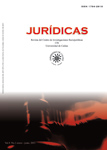Authors
Abstract
The tax tripartite categories— taxes, rates and special contributions— are those that in the practice act as economic instruments for the achievement of environmental policy aims. Since they cover different tributary institutes, each one intervenes in such intentions in a different way in accordance with the respective legal description of the taxable event established by the fiscal legislation for the appearance of the tax rate . This causes that, in a generalized way, and from the perspective of Tax Law, they cannot be catalogued as efficient figures in the preservation of the natural resource. The environmental tax system, nevertheless, does not limit its development to the previous categories. It has integrated new categories that, up to this moment do not constitute a part of the range of species contemplated in Tax Law. The legislator —enjoying full autonomy— has linked the new ones with the classic ones, favoring, even, the approximation and the mixture of the already existing categories. This situation has generated doctrinal controversy, because of the legal implications of having legal figures with tributary apparel, without really being so.
References
ALONSO GARCÍA, E. (1995). Legislación sectorial de medio ambiente. Ponencia I Congreso Nacional de Derecho Ambiental, Sevilla, 19-21 de abril de 1995. Revista de Administración Pública, No. 137, p. 60.
ARRIETA MARTÍNEZ DE PISÓN, J. (1991). Régimen fiscal de las aguas. Madrid: Civitas.
BANACLOCHE PALAO, C. (2008). “La llamada ecotasa” (pp. 895-902). En: Tratado de tributación medioambiental, Vol. II. Pamplona: Aranzadi.
BANACLOCHE PÉREZ, J. (2004). Los impuestos ecológicos de Andalucía (comentario y manual de gestión). Córdoba: AJB.
BOKOBO MOICHE, S. (2000). Gravámenes e incentivos fiscales ambientales. Madrid: Civitas Ediciones.
CABALLERO GEA, J. A. (2003). Licencias, tasas e impuestos municipales. Madrid: Dykinson.
CARBAJO VASCO, D. & HERRERA MOLINA, P. M. (2003). Marco jurídico constitucional y comunitario de la fiscalidad ambienta. Madrid: Fundación Biodiversidad.
CASTILLO LÓPEZ, J. M. (1999). La reforma fiscal ecológica: (marco económico e institucional para el establecimiento de tributos ecológicos en el estado central y las comunidades autónomas. algunas propuestas). Granada: Comares.
CHICO DE LA CÁMARA, P. (1998). El uso de contribuciones especiales para financiar la ejecución de obras hidráulicas medioambientales. Noticias de la Unión Europea, No. 162, pp. 70-72, 77.
CLAVIJO HERNÁNDEZ, F. (1993). “Las contribuciones especiales” (pp. 561-565). En: Tratado de Derecho Financiero y Local. Madrid: Marcial Pons.
CORS MEYA, F. X. (1993). “Calificación de los cánones sobre el agua”. Revista de Hacienda Autonómica y Local, No. 67, pp. 75-782.
FERREIRO LAPATZA, J. J. (1998). “La clasificación de los tributos en impuestos, tasas y contribuciones especiales”. Revista Española de Derecho Financiero, No. 100, pp. 552-554.
FERNÁNDEZ VALVERDE, R. (1995). Aspectos materiales del Derecho Tributario. Madrid: Consejo General del Poder Judicial.
GARCÍA DORADO, F. (2002). Prohibición constitucional de confiscatoriedad y deber de tributación. Madrid: Dykinson.
GRUPO PARLAMENTARIO PSOE DE ANDALUCÍA (2001). Dictamen sobre la fiscalidad ambiental: la ecotasa. Sevilla.
GUERVÓS MAÍLLO, Ma. A. (2007). “Tasas ambientales”. En: Estudios en homenaje al profesor Pérez de Ayala. Madrid: Dykinson.
HERRERA MOLINA, P. M. (2000). Derecho tributario ambiental. La introducción del interés ambiental en el ordenamiento tributario. Madrid: Marcial Pons.
________. (2001). “Los tributos ecológicos como recurso financiero local”. En: Hacienda y finanzas municipales. Ponencias presentadas en el XIV Programa Iberoamericano de Formación Municipal organizado por la Unión de Ciudades Capitales Iberoamericanas (UCCI). Madrid: Marcial Pons.
INSIGNARES GÓMEZ, R. C., MARÍN, ELIZALDE, M., MUÑOZ MARTÍNEZ, G., RODRÍGUEZ SOSA, H., GALLEGO VÁSQUEZ, J. E., GARCÍA POVEDA, B. et al. (2007). Curso de Derecho Fiscal. Bogotá: Universidad Externado de Colombia.
MARTÍN QUERALT, J., LOZANO SERRANO, C., CASADO OLLERO, G. & REJERIZO LOPEZ, J. M. (1999). Curso de Derecho Financiero y Tributario. Madrid: Tecnos.
MARTÍN QUERALT, J. et al. (2009). Curso de Derecho Financiero y Tributario. Madrid: Tecnos.
MARTÍNEZ MARTÍNEZ, J. M., PÉREZ-OLIVARES HINOJOSA, F., SITJAR DE TOGORES, A. I. (2006). “El concepto de canon en la jurisprudencia” (pp. 81-82 y 84). En: Cuadernos de Formación, Vol. 1. Instituto de Estudios Fiscales.
ORTEGA MALDONADO, J. M. (2005). Tasas sobre molestias y riesgos permitidos. Madrid: Instituto de Estudios Fiscales.
PÉREZ ZÚÑIGA, J. Ma. (2004). La reforma legal del régimen de las tasas y precios públicos en los servicios locales: las tasas locales (aproximación al problema de la financiación de las corporaciones locales). Granada: CEMCI Publicaciones.
RIVAS NIETO, M. E. (2006): Los tributos atípicos. Madrid: Marcial Pons.
ROSEMBUJ, T. (1995). Los tributos y la protección del medio ambiente. Madrid: Marcial Pons.
ROZAS VALDÉS, J. A. (2002). “Tasas y precios públicos” (pp. 228-229). En: La protección fiscal del medio ambiente. Aspectos económicos y jurídicos. Madrid: Marcial Pons.
RUIZ GARIJO, M. (2002). Problemas actuales de las tasas. Valladolid: Lex Nova.
VADRI I FORTUNY, Ma. T. (1994). “La naturaleza jurídica de los instrumentos económicos en la gestión de los residuos”. Revista Jurídica de Cataluña, No. 2, p. 354.

 PDF (Español)
PDF (Español)
 FLIP
FLIP





















